Creating a Weekly Homeschool Schedule that Works for You
Have you tried and tried to create a homeschool schedule that encompasses all of the subjects you want to include with no success? Come check out this simple planning method I’ve used to create a homeschool routine that works!
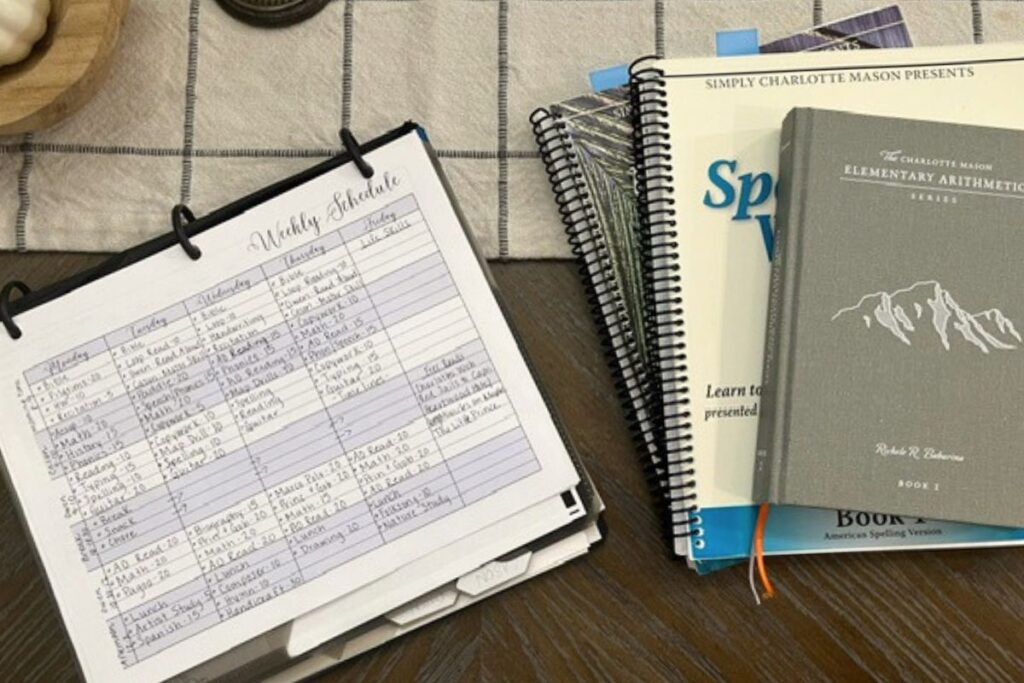
Hey homeschool friends! Today we’re talking about something that may not be exciting to you – but as a certified planning fanatic, it is exciting to me.
I know that may sound strange, but honestly, I do love planning. Creating systems and routines that help keep all of my plates spinning is something I have done since the beginning of my homemaking days.
And since we started our homeschool journey a few years ago, we have had to implement systems and routines into it as well. Which is what I’m talking specifically about in this post. Oh, and did I mention I have free planning printables for you? I’ll include links down below!
I’m also sharing our personal weekly homeschool schedule for example. So, let’s get started!
Affiliate disclosure: This post may contain affiliate links. As an Amazon Associate this means I will earn a small commission if you choose to purchase through my links. This is at no extra cost to you! Read full disclosure here.
Why You Need a Homeschool Schedule or Routine
Homeschooling can be a lot. I don’t mean that negatively, I just mean it honestly. Especially when you have multiple kiddos that all need your one-on-one attention.
Having a schedule or routine (more on the difference in a moment) isn’t meant to be restrictive. It’s meant to be freeing. You can confidently sit down for daily lessons knowing that you are doing the next right thing. Here’s some of the benefits to planning out your school days in advance.
More Variety
Have you ever got the end of your school year and thought “Oh man, I totally forgot I had this (fill in the blank) that I wanted to use!”? If you haven’t, I’m proud of you (seriously). But personally, I have a habit of picking up cool resources at estate sales and thrift stores, and then forgetting about them once I put them on the bookshelves.
But by having a plan, you can work all of those resources in! This gives your kids a wide range of subjects and materials to learn from, which keeps learning interesting.
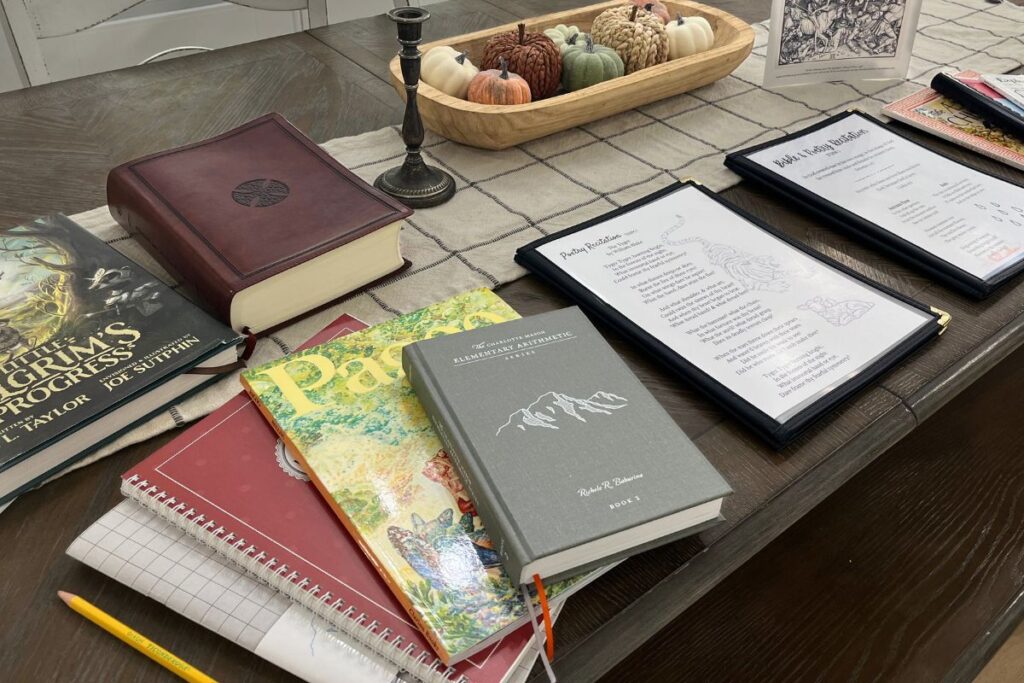
Less Stress
One of the main reasons I encourage women to set systems up in their life is because of the amount of relief it can bring.
I’m willing to bet you’re a busy mom. You’re probably the one who is primarily in charge of household chores, cleaning, and appointments. That’s a lot to manage and to keep up with in your head. And often times, we feel like we’re forgetting something. The same overwhelming feeling can trickle over into our homeschool journey.
By having a simple plan, you can know exactly what you need to be working on. That doesn’t mean distractions won’t come and concessions won’t need to be made. But you have an idea, a plan, of what to work on without having to make spur of the moment decisions.
More Freedom
We all know the number one question homeschoolers get (you know, the one about socialization). And we also know that homeschoolers have ample opportunities to join co-ops, playgroups, nature groups, 4-H, and extracurriculars these days.
But sometimes, it’s not about the opportunity. It’s about the time we have available as parents to get them to these outings. Which is another reason why planning is beneficial.
You can say “YES” to more outside the home activities when you are better managing the tasks inside your home. You’ll be able to aside specific days and times without worrying about “falling behind”.
Homeschool Schedule vs. Homeschool Routine
The first thing you need to determine is if you want to set up a schedule or a routine – or maybe even a combination of the two. But you need to understand the difference between the two before you can decide.
A schedule provides more structure. It outlines specific times for various available activities, such as lessons, breaks and extracurricular activities. It is a timetable of how you will spend your school hours. For example:
- 8:00 – Morning Time
- 8:30 Math
- 9:00 Reading
- 9:15 Spelling
A routine is more of a consistent daily flow but doesn’t necessarily have times attached to it. It focuses on the sequence of activities rather than strict timing.
You can also have a combination of the two. You may have a set start time, end time, and break times, but the activities you’re doing may not have set times attached.
Scheduling can assist in offering structure, especially to start and end times of your school day. But a routine allows for more flexibility when concessions need to be made based on real life circumstances. Finding a good balance of the two has been key in keeping our homeschool productive and stress-free.
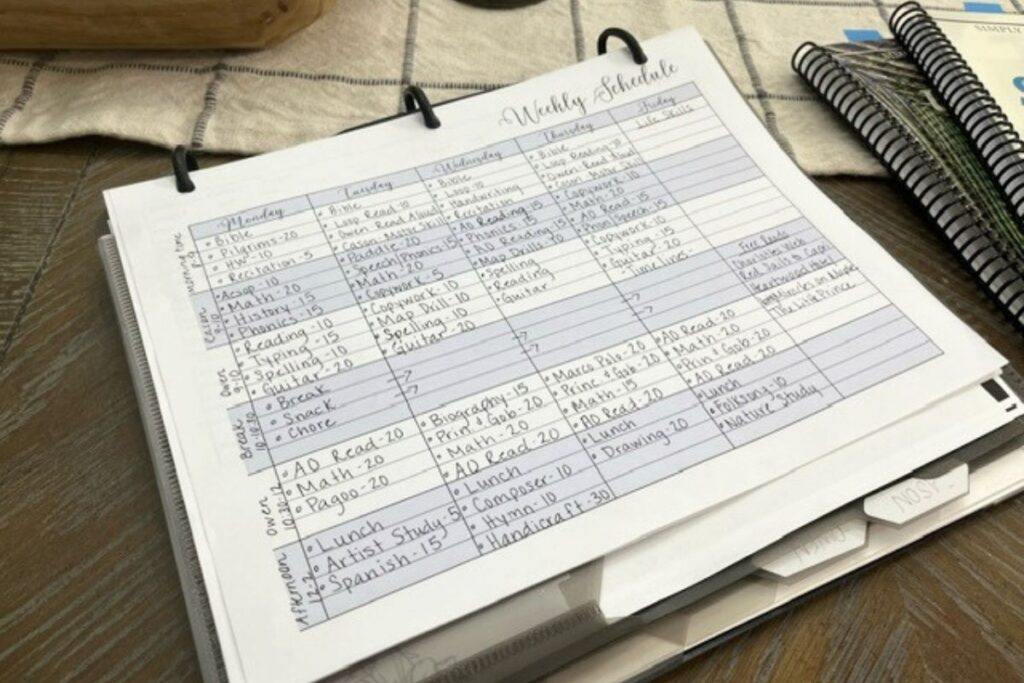
How to Create Your Own Homeschool Schedule
1. Get Your Supplies
First up, you need something to make your schedule on. You’re probably going to make a few different versions before you get it all how you want it, so just start with some plain paper. But if you’re looking for some fun planning supplies, here’s a few of my favorites!
- Cute Binder – 3-ring binders are perfect for creating your own custom planners or budget binders. They have plenty of room for your budgeting worksheets, bills, and supplies!
- Mr. Pen Pens – There’s just something about a nice pen…and not only do these pens write nice, they also look nice!
- Mr. Pen Highlighters – No color printer? No problem! Some highlighters can allow you to color code your budget.
- Planning Stickers – An inexpensive pack of stickers for your planning pages can make the planning process feel creative and more enjoyable.
2. Determine Your Homeschool Days
Before you start filling in lesson times and activities to do at home, be sure to make note of days and times that you leave the house. This could be for recurring appointments, practice, play groups.
Anything that requires you to leave the house a specific day and cuts into potential schooling time. This may mean certain days are shorter than others, or that you have to continue school once you get back home.
Pro Tip – Designate 1 or 2 days a week during a specific time frame for all appointments and errand running to fit in to. The next time you’re scheduling appointments, you can say I’m available on Wednesday’s from 1-3 without worrying about cutting into your school schedule!
3.How Many Lessons & How Long
This part can be a little tedious, but it is so important in setting up a system that actually makes sense. You’ll just need a blank piece of paper to write on, along with your curriculum choices.
For each child (and then for group subjects) you need to determine:
- What subject’s you’ll cover & how many times a week you’ll cover it. Not every subject has to be covered daily. In fact, some things you may only do once a week. This allows you to cover a broad range of subjects without spending 8 hours in the homeschool daily.
- Approximately how long you intend to spend on each subject. This will depend on the curriculum you’re using and the age of the child. A lot of curriculums have suggestions for approximately how long lessons should take, but feel free to adjust based on your child’s needs.
Pro Tip – If timing your lessons seems like something you don’t want to do, just remember that it isn’t meant to rush your kids – it’s meant to provide a “hard stop” to formal lessons. That way you can move on to life lessons & free play, which are equally important in the life of our children. Certain activities, like nature study or craft time, can be more open ended by scheduling them at the end of formal lessons.
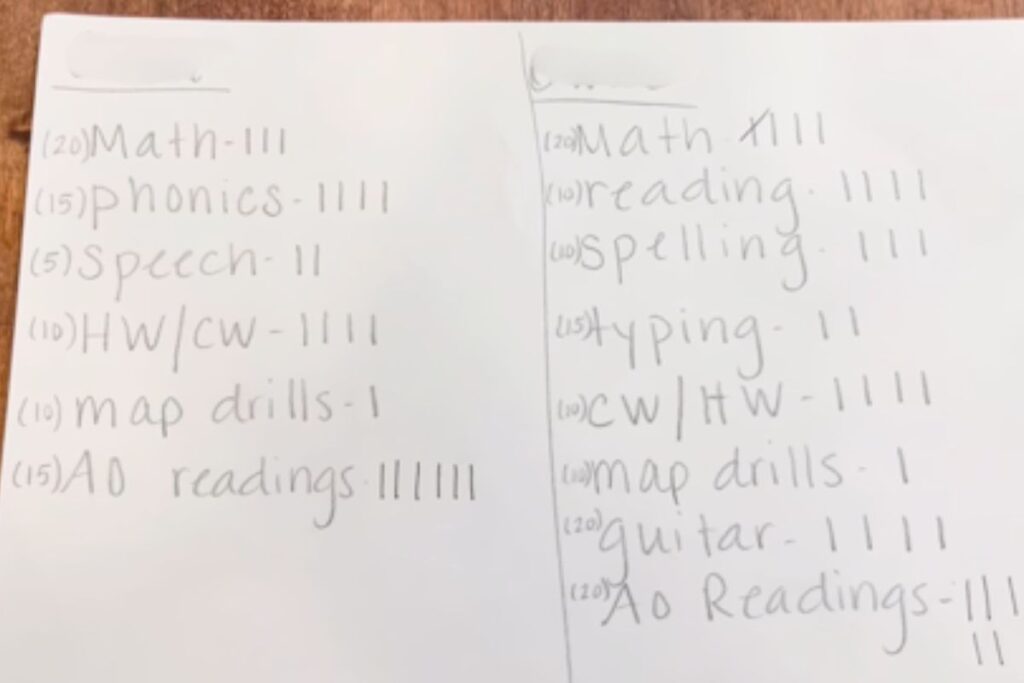
4.Determine School Flow
Next, decide how you want to break your days down. Do you want to plan in small time blocks of say 15-30 minutes? What about larger time blocks of 1-2 hours?
Will you need individual lesson times with certain kids? Can someone be working independently while you’re working one-on-one with other children?
I’ve found it best to make a schedule that matches our natural daily routine as much as possible. So, breakfast time is combined with morning time. We’re all gathered together already, so why not read the Bible, practice our recitations, and get some of those small family subjects out of the way?
After you have the flow you want, you can transfer it to one of the free printable schedules I offer. Choose from:
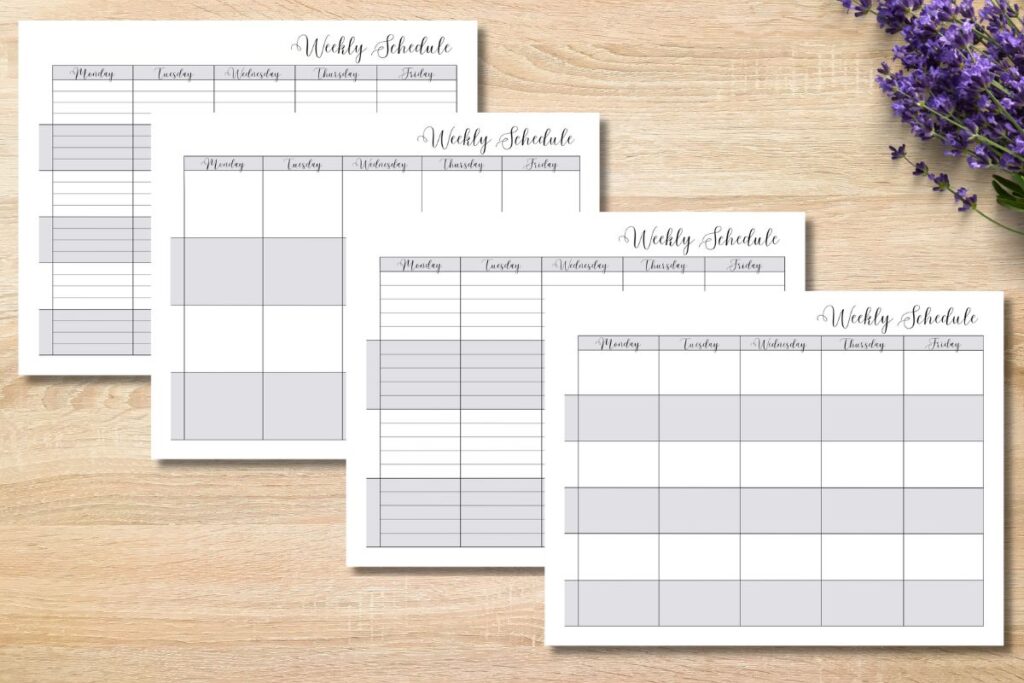
5.Fill In Lesson Times
Now that you have your school days picked, the number of lessons per child with times, and the flow of your day decided – you can start filling in details! Using the list you made earlier (remember the one with the subjects, days per week, and lesson length) and plug them into a time slot or block.
As you add a lesson the schedule, be sure to remove it from the lesson list. So, if you want to do history twice a week, update your list as you schedule each history lesson out.
Keep an eye on the time blocks you initially set up. If you have an hour scheduled for one-on-one lessons with a child, be sure that all subjects combined stay within that time. If you realize that you’re not able to fit all lessons into the time block, there may be certain things you need to adjust.
This could be adjusting lesson lengths, the number of days each subject is covered, combining certain subjects for family subjects, or extending a time block. Just be sure that you are using age-appropriate times.
6.Be Ready to Adjust
Once your schedule is done, you’re going to feel accomplished – and that’s great! But I know, and you know, that homeschooling requires constant reevaluation. Which means scheduling may not be a one and done activity.
If you find that you’ve made a schedule that’s impossible to stick to, you may need to reevaluate after a few weeks. Life circumstances change, curriculum needs to be adjusted, and so many other variables can affect your original schedule.
This doesn’t mean you’ve failed at scheduling – it just means life is happening and you’re adjusting to keep up with it!
Be sure to join me over on Youtube for all things Homeschooling & Homemaking!